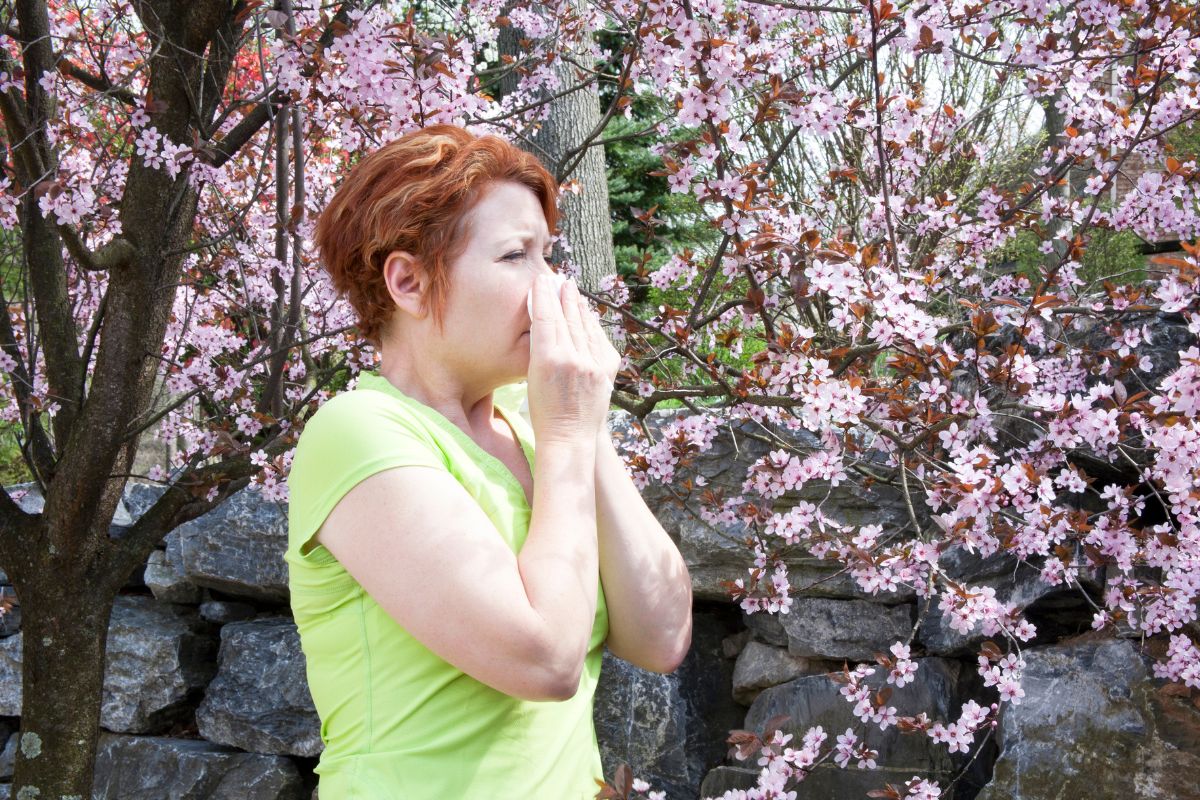Seasonal allergies can be very frustrating, especially if your allergy symptoms are particularly strong and seem almost debilitating.

Regardless of the month or the weather, you want to be able to go about your day as you please, but seasonal allergies can tend to get in the way of this.
Which months are the worst, really depends on the type of allergy that you have.
Some people will tend to find spring and summer are the worst months for itchy eyes and runny noses, while others may dread coming into the fall and winter when their allergies begin to flare up.
And of course, some are unlucky enough to never get any respite from their aggravating and irritating symptoms as they battle with allergens in the air year-round.
To include everyone, regardless of their offending seasons, throughout this article we will go month by month, talking about the challenges that are faced at this time of the year and how to reduce some of these pesky symptoms.
January
Throughout the first month of the year, in the winter, there is a lot less pollen floating around in the air which may be music to your ears if you suffer badly from hay fever.
However, during these cold months when you turn the heating up to keep you toasty warm, you’re actually kicking up a lot of dust from your home which is a known winter allergy trigger.
For people who are allergic to dust, allergies throughout the winter can actually be just as bad as they are for some during the spring and summer.
If you want to try and reduce the amount of dust in your home, try to keep humidity under 55%. When vacuuming opt for one with a HEPA filter and make sure that you’re vacuuming regularly to keep dust build-up at bay.
Using pillows, mattress protectors, and comforters that have dust-mite-proof covers can also help flare-ups through this month.
February
Through February you can still be dealing with the same problems that you were the month before, except now, depending on where you live, you may also have to deal with certain types of trees causing allergy problems.
Yes, pollen can start polluting your air as early as February. Trees such as Elm, Catalpa, Olive, Hickory, Pecan, Walnut, and Sycamore can all cause the same problems that you’ll see in the spring such as itchy, watery eyes and some nasal congestion.
If this is the case you might want to start taking some antihistamines in the morning to help alleviate symptoms.
March
Tree pollen is still an issue throughout March. In fact, march marks the beginning of springtime. And while we all might enjoy looking forward to some nicer weather and some longer days, a lot of hayfever suffers dread these months where pollen fills the air.
Keep an eye out for the pollen count in the air once Spring begins. You may want to avoid being outside too much when pollen is particularly high, and you’ll certainly want to prepare yourself with all the remedies (and tissues) that you can.
April
April is often known for April showers. And what does that rain bring with it? A whole lot of spring allergies. Because the rain helps the flowers to grow and bloom, this month can often be very pretty, but it can also be very full of pollen.
For some areas of the country, grass pollen is also beginning to emerge. So if the pollen from the flowers wasn’t enough to set your allergies into overdrive, then this certainly will.
Symptoms can often feel at their worst here, so it’s important to be taking your medicine (prescribed or over the counter) regularly by this point.

May
May is much a continuation of the last couple of months. Nothing really changes yet. Which isn’t great for allergy sufferers.
Especially since tree pollen can begin as early as February, and four months later it still may not have come to an end.
June
While grass pollen can start from as early as April, June is when it really tends to start triggering most people’s allergies.
As the temperature begins to sore in the Summer, you also tend to be spending a lot more time outside than you may have in the previous months.
As most people are now having more contact with the allergens, the symptoms begin to become much worse than they were when they were say only in contact for shorter periods of time.
Try taking breaks indoors to alleviate symptoms, remembering to change clothes and have a shower as the pollen can cling to you.
July
Finally, a little bit of good news for those with pollen allergies. Grass pollen will start to die off this month which can make your symptoms much more manageable.
Bad news for those allergic to mold and spores, July marks the beginning of fungus spores and seeds. Mold can grow on many things such as fallen leaves, grass, and even grains.
Symptoms of this allergy will start to worsen throughout July.
August
Those with summer allergies, as opposed to spring allergies, will find August the peak month for symptom flare-ups.
The hot and humid weather is a breeding ground for mold spores so on days when the count for them is particularly high, it may be in your best interest to spend the day indoors.
To combat the symptoms try keeping the air conditioning on and use a HEPA filter.
September
As summer draws to a close and fall begins, new allergies such as ragweed begin. Their pollen is lightweight and spreads really easily and so can cause strong symptoms to present themselves.
The wetter and windier that your area is, the more the pollen will spread and so unfortunately the worse you will feel.
October
Fall allergies usually start to dissipate by October, especially in the northern parts of the United States. But if you live in a warmer climate they may still be lingering around especially if you have mold or fungi allergy.
November
Ragweed pollen should also now be drawing to an end, as should fungi and molds. For those who feel like they very rarely get respite from allergies, November is a month they will welcome with open arms.
For those with outdoor allergies, November is the best month to finally get outside without feeling annoying symptoms that make you feel ill.
December
If you suffer from allergies quite badly, I’d recommend avoiding real Christmas Trees in your home. Instead, opt for an artificial one.
If this is not an option, take the tree home a week or so before you plan to actually decorate it and give it a good shake first to rid it of spores that may make your allergies worse.
Final Thoughts
There are definitely allergens everywhere you look, and each month brings its own set of challenges for those who suffer.
However, I think Spring through to Summer can be the really worst times, especially for those allergic to pollen.
- Understanding Male Reproductive Health: A Complete Guide - February 2, 2025
- Simple Healthy Skin Habits for Radiant Skin - December 6, 2024
- Unlocking the Connection Between Nutrition and Mental Health - December 3, 2024








